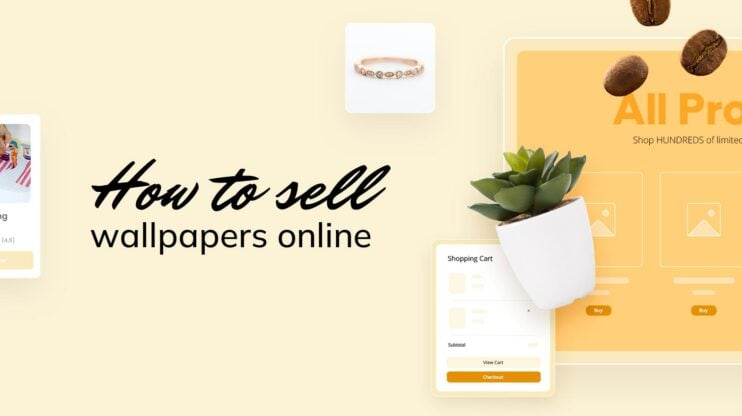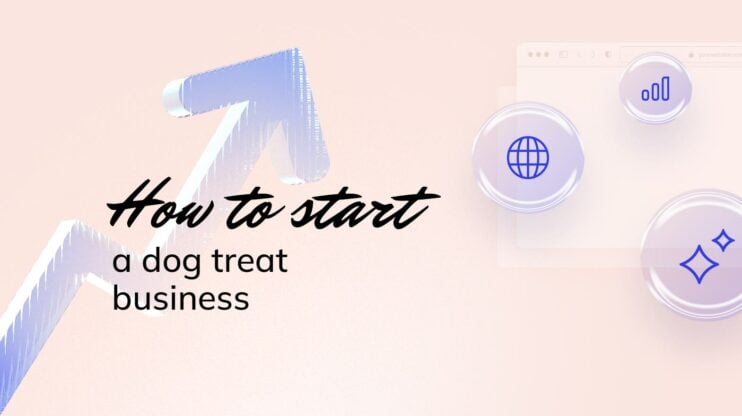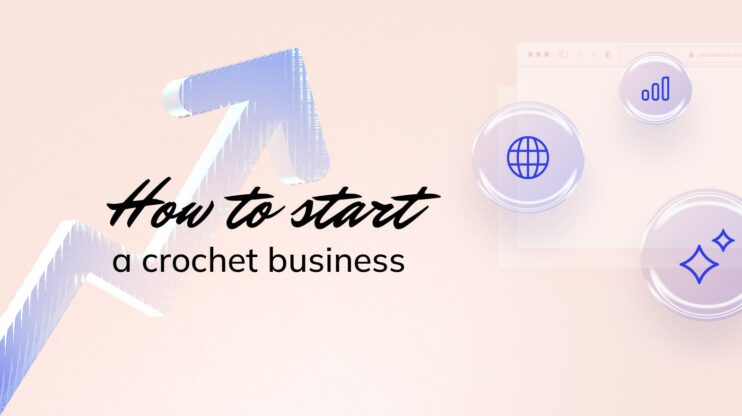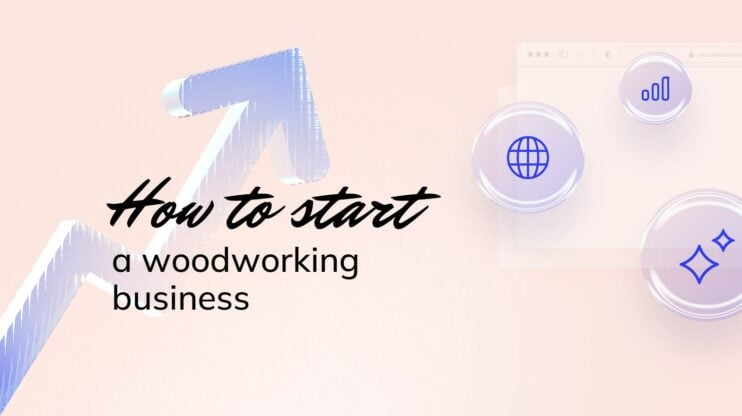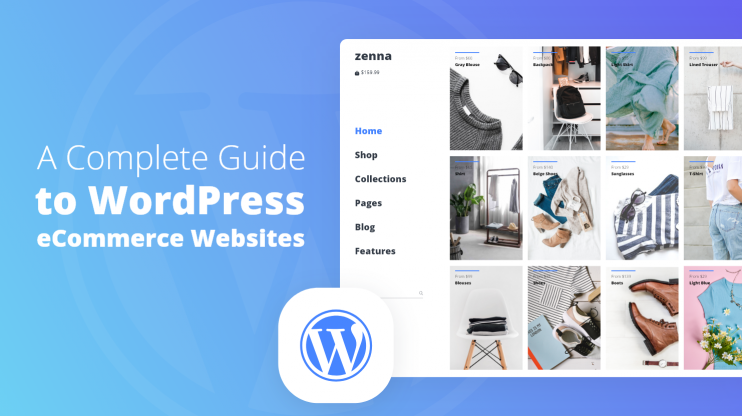Have you ever dreamed of turning your creative passion into extra money? Why not. With the global graphic design market valued at over $45 billion, selling designs online isn’t just a side hustle, it’s become a promising business opportunity. The best part about selling designs is that you don’t need a brick-and-mortar store or a massive budget.
Are you a graphic designer, illustrator, or pattern artist? No matter your title, the digital sphere is overflowing with opportunities to monetize your work. Whether you choose to sell on a marketplace, like Etsy and Redbubble, or prefer the independence of running your own online store, the possibilities are endless.
We will discuss every step of the process, like how to find the best platforms for selling your designs, setting up a professional online store, and marketing strategies to attract buyers and grow your brand.
Let’s learn how to sell designs online and turn your creativity into cash!
Why now is the best time to sell your designs online?
If you’ve ever doubted whether selling designs online is worth it, let’s put those fears to rest. The global digital design market is booming, and it’s not slowing down anytime soon. In fact, the digital artwork market was valued at $3.995 billion in 2024 and is projected to grow at a CAGR (compound annual growth rate) of 16.8%, reaching around $13.84 billion by 2032. Thanks to the skyrocketing demand for visuals in marketing, ecommerce, and social media, businesses, influencers, and content creators all need eye-catching designs—and they’re willing to pay for them.

Create your online store in minutes!
Looking to sell online? Develop and launch your store with 10Web AI Ecommerce Website Builder.
Who’s buying designs online?
Design is everywhere, and at some point, everyone needs it, be it for branding, marketing, or personal projects. This means there will always be a demand for creative work. The beauty of selling digital designs is that your audience is huge and diverse. Here’s who’s actively searching for fresh, high-quality designs:
- Entrepreneurs & small businesses: They need logos, social media graphics, and branding materials.
- Content creators & influencers: They’re always on the lookout for unique templates, YouTube thumbnails, and Instagram presets.
- Print-on-demand enthusiasts: Many online sellers need original artwork for T-shirts, mugs, and phone cases.
- Home & office decor shoppers: Digital art prints are a hot trend for interior decor lovers.
- Hobbyists & DIY lovers: Crafters buy SVGs, clipart, and patterns for projects like scrapbooking and Cricut designs.
What designs sell best?
Not sure what kind of designs to sell? Here are some of the most in-demand categories right now:
- Website themes and templates: With the continuous growth of online businesses, there’s a high demand for professionally designed website themes and templates.
- Social media templates: Instagram posts, Pinterest pins, YouTube banners
- Digital planners & stationery: Printable planners, calendars, and journal pages
- Logos & branding kits: Perfect for startups and personal brands
- Custom illustrations & clipart: For Etsy sellers, bloggers, and marketers
- Vintage-inspired prints: Nostalgic designs are making a comeback, with consumers seeking vintage-inspired prints and wall art to add character to their spaces.
- 3D models and fonts: Through niche marketplaces like TurboSquid and MyFonts, designers can sell unique 3D assets and custom typography.
Pro tip: Browse Etsy, Creative Market, and Redbubble to see what’s trending. This will give you insights into what customers are buying annually.
Setting up your online design business
You’re ready to turn your designs into a profitable business. Great! But where do you start? If you just upload files and wait for sales to roll in, you might never get anything real. You need a structured approach, from choosing what to sell to setting up a professional store. Here’s how to do it the right way.
Define what to sell
One of the biggest mistakes new sellers make is trying to sell everything to everyone. The issue arises from not understanding what you want to sell and who will buy what you sell. The more focused you are, the easier it is to attract the right audience.
Start by identifying what you enjoy designing and what’s currently in demand. Some popular categories include vintage-inspired prints, digital planners, and website templates. Research will help you validate your ideas. If you notice consistent demand in a category, you’ve found a niche worth exploring.
Set up a business model and pricing strategy
Before you launch your store, it’s important to decide how to sell designs online. Will you offer one-time purchases, subscriptions, or custom design services? Some designers make money through marketplaces like Etsy and Creative Market, while others build their own ecommerce store for full control over pricing and branding.
Once you decide which way you want to go, set a pricing strategy. Look at what competitors charge for similar products and consider factors like time spent designing, market demand, and perceived value. If you sell digital downloads, you might price lower but sell in higher volume. If you offer custom work, your pricing should reflect the extra time and expertise involved.
Choose a business name and secure a domain
Having a memorable and professional online presence means having a business name that’s unique, relevant to your work, and easy to spell. To choose a great name that fits your business, use 10Web’s AI Business Name Generator, which provides creative and tailored name suggestions in seconds, saving you hours of brainstorming. Once you’ve selected a name, it’s essential to secure a matching domain. With 10Web’s Domain Registration service, you can easily check the availability of your chosen domain and register it directly through the same platform you selected your business name from. This integrated approach ensures consistency across your brand’s online presence, making it more professional and easier for your audience to find you.
Marketplaces where you can sell your designs
As selling designs online grows in popularity, so does the number of platforms you can sell your designs. Choosing a marketplace means knowing where your potential customers look for designs to buy and going right there. With dozens of platforms out there, I’ve picked the most recognized ones for you. Let’s look at each platform’s fees, audience size, pros and cons before getting into details.
| Platform | Fees | Audience Size | Pros | Cons |
| Etsy | Listing fee: $0.20 per item. Transaction fee: 6.5% per sale |
96 million active buyers | Large, engaged audience. Ideal for handmade and unique items |
High competition. Additional fees for promotions |
| Redbubble | No upfront fees. Artist margin added to base price |
30 million monthly visitors | Handles production and shipping. Global reach |
Limited control over pricing. Lower profit margins |
| Zazzle | No upfront fees. Royalty rates: 5-99% |
30 million monthly visitors | Customizable products. Set your own royalty rates |
Saturated market. Complex design tools |
| Creative Market | 30% commission on sales | 2.5 million users | Set your own prices. No exclusivity required |
High competition. Requires self-promotion |
| Society6 | No upfront fees. Artist earnings vary by product |
40 million monthly visitors | Wide range of high-quality products. Hands-off fulfillment |
Lower profit margins. Limited branding options |
| Fiverr | 20% commission on all sales | 4.2 million active buyers | Popular for freelance gigs. Good for custom design requests |
High competition. Fees can eat into profits |
| Shutterstock | Contributor royalties: 15-40% | Millions of buyers worldwide | Massive global reach. Great for licensing designs to businesses |
Requires a steady flow of uploads. Lower payout per sale |
1. Etsy
If you think of Etsy as a good platform for handmade, vintage, and unique goods, then, let me tell you that it’s also a fantastic platform for selling digital products like planners, logos, and clipart. Its large, engaged audience means plenty of potential buyers, but high competition can make it challenging to stand out. To succeed, focus on stunning product images and customer-friendly descriptions.
Pro tip: Adding keywords in your titles and tags can help your designs appear in searches. Ecommerce SEO as it is.
2. Redbubble
Redbubble is a print-on-demand platform that takes care of everything from production to customer service. You just upload your designs, and they’ll appear on products like T-shirts, stickers, and tote bags. While Redbubble is great for global exposure, the downside is limited pricing control and smaller profit margins.
3. Zazzle
Zazzle offers extensive customization options, allowing buyers to personalize your designs on products ranging from invitations to apparel. As a designer, you set your royalty rate (anywhere from 5% to 99%), which gives you control over your profits. However, the platform is highly competitive, so standing out requires a strong portfolio and an understanding of what you are selling. Zazzle is ideal for artists who want flexibility in pricing and enjoy creating designs that lend themselves to customization.
4. Creative Market
Creative Market is a platform designed for professionals, giving you control over pricing and the freedom to sell non-exclusively. If you are selling digital assets like fonts, templates, and graphics, Creative Market is where you should start. The 30% commission rate is a bit steep, but Creative Market’s user base is highly targeted—primarily consisting of designers, businesses, and marketers looking for high-quality assets. Success here often depends on active self-promotion to drive traffic to your store.
5. Society6
Society6 is another print-on-demand platform that focuses on premium products like art prints, furniture, and home decor. If your designs are aesthetic and geared toward high-end buyers, this is a great platform to showcase them. Like Redbubble, Society6 handles production and shipping for you, but it offers less control over branding and pricing.
6. Fiverr
A little different from others, Fiverr is all about custom work. If you’re great at creating logos, social media templates, or branding kits, Fiverr connects you directly with clients looking for specific design services. You can set up “gigs” outlining what you offer and your price range. While Fiverr takes a 20% cut of your earnings, the platform gives you access to a global audience actively searching for designers. To stand out, keep your gigs detailed, maintain quick response times, and aim for glowing client reviews.
7. Shutterstock
Shutterstock is perfect if you want to license your work to businesses and marketers. Unlike marketplaces like Etsy or Redbubble, Shutterstock serves commercial buyers looking for ready-to-use designs, vectors, and illustrations. The catch is royalties per download are relatively low (ranging from 15% to 40%), so it works best if you can upload a high volume of quality designs regularly. Still, with its massive global reach, Shutterstock can be a consistent income stream for designers who are willing to play the long game.
Sell designs online with 10Web
Deciding where to sell your designs depends on your long-term goals. If you want full control over pricing and customer experience, setting up your own website with 10Web AI Ecommerce Website Builder is a great option. 10Web automates a lot of things for you from building a functional website to SEO optimization and speed. This allows you to avoid marketplace fees and build a strong online presence. Here is how you can create your website with 10Web and start selling designs online.
- Go to 10Web.io > provide your store name > describe it in a few words > click Generate Your Website.
- Review the Website name and description.
- Click Next > review the website structure that AI’s created.
- Click Next > choose the website colors, fonts, and styles.
- Click Generate to apply.
After your design selling website is ready, you will be directed to a user-friendly and intuitive dashboard, where you can manage and customize your store. Let’s look at what you will get from the 10Web’s AI Ecommerce Website Builder.
- AI-powered store creation: Build a fully customized online store in minutes. Simply describe your business, and the platform handles the rest. No coding or tech skills required!
- Built-in SEO tools: Integrated SEO tools to help you optimize every page, product, and image for search engines. From adding meta descriptions to generating fast-loading pages.
- Effortless customization: Your store should reflect your brand, and 10Web makes customization simple. Use its drag-and-drop editor to adjust layouts, add product categories, or fine-tune your design. AI Co-Pilot also helps you create compelling product descriptions and optimize images by just chatting with it.
- High performance for better rankings: Search engines love fast websites, and 10Web delivers top-tier performance. Hosted on Google Cloud servers, your site enjoys lightning-fast load times and 99.99% uptime.
- Advanced security features: Protecting your store (and your customers) is just as important as visibility. With features like DDoS protection, automated backups, and SSL certificates via Cloudflare Enterprise, 10Web ensures your website remains secure.
- Responsive design for all devices: Automatically adjusts your site’s design to look flawless on any device, from smartphones to tablets, improving your chances of ranking well on mobile searches.
Want to stand out online? Start with a platform that’s designed to help you grow.
Conclusion
Selling designs online is no longer just creativity—it’s a legitimate way to build a thriving business. Whether you’re a graphic designer, illustrator, or pattern artist, the opportunities in selling design online are endless. As the demand for visual content continues to grow across marketing, ecommerce, and social media, now is the perfect time to start.
Ready to take control of your design business? Build your professional online store effortlessly with the 10Web AI Ecommerce Website Builder—your all-in-one solution for success. Create, customize, and showcase your designs easily. The future of your creative business starts here.
FAQ
Can you make money selling designs online?
Should I open my own shop or use marketplaces?
How can I make money from my designs?
How do I sell my graphic designs online?
What file formats do I need to sell designs online?
Which niches are most profitable?
How do I market my designs?

Create your online store in minutes!
Looking to sell online? Develop and launch your store with 10Web AI Ecommerce Website Builder.









